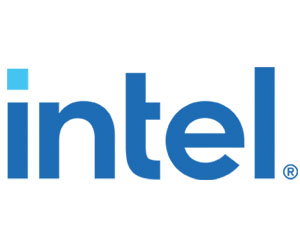BIZTECH: What are the most important cloud trends to know about?
Hilliker: There are three of them. First is multicloud, which is about finding the right cloud for the right workload. It’s also about thinking ahead to ask, where is this workload going to go? Where does it belong? What resources and services does it require?
Next is AI-driven application development. Models are changing, with an increased focus on reduced time to market and improved business value. To achieve these goals, companies need speed and adaptability. This translates into the evolution of legitimate artificial intelligence that helps automate key processes and enable time to value. Further down the AI road are improved DevOps and microservices, which structure cloud-based applications as a collection of loosely coupled, independently deployable services to improve speed and scalability.
Scale — both up and out — is the third critical cloud trend in 2022. How do I scale things faster? How do I optimize cloud architectures? How do I eke out the last bit of performance? Businesses need to get the most out of an instance or service, without getting shocked by the bill.
Not everything needs to be in the cloud. Finding a balance is critical to delivering on scale without getting sticker shock. Intel is helping companies achieve a balanced approach while optimizing their cloud architectures.
DISCOVER: Find out what small businesses need to know about app modernization.
BIZTECH: What steps can IT leaders take to respond to these trends?
Hilliker: When it comes to multicloud, it’s about getting a better awareness of what workloads are running, how they’re operating and where applications are located. For example, while it’s easy to get data in, it can be expensive to get data out of applications at the fringe. Architecture and planning from Intel can help.
Robust benchmarking is also critical. Intel is doing a ton of it. From WordPress to Oracle to Java, we benchmark everything and can do it in the cloud. Even better? We’re now giving out our tuning guides for open source. While these were originally used for on-premises deployments, they’ll also work in Infrastructure as a Service environments. They offer details on how to run, how to set up and how to get optimal performance out of services. Put simply, benchmarking is now a north star for cloud success. Intel is helping companies achieve this goal by sharing what we’ve optimized and what the customer can expect.
Finally, there needs to be a shift across organizations to embrace the concept of financial operations, or FinOps. Much like DevOps, FinOps is a mindset change: How do you do financial management of your cloud with more accountability?
At Intel, we have a whole team in IT that does just this, and we’re sharing our model of how we’ve done it with other businesses. By combining finance and operations to get a real-time view of what’s happening — and what it costs — businesses are better prepared to identify ideal multicloud workloads, deliver on application development and assess opportunities for scale.
READ MORE: Learn why a multicloud approach might be the best fit for your organization.
BIZTECH: What are some potential pitfalls along the way?
Hilliker: The biggest pitfall is making huge, sweeping public statements of moving entirely to the cloud. While this may seem like a good idea at the time, it’s an awkward conversation to have with customers and stakeholders when businesses need to ratchet it back and adopt a slow-and-steady strategy.
Rather than going all-in, it’s a good idea to start with the end state in mind. Determine where cloud fits in your organization, what specific purpose it serves and what metrics you’re looking to achieve. Don’t do the blanket statements.
The cost element is also challenging. I call it “the shock and the squeeze.” The shock is your first bill, when you see how much you’ve spent on cloud services. Businesses get maybe two quarters to get those shock moments out of the way, and then finance starts squeezing the budget. As a result, businesses have to be smarter on scale to ensure they’re getting the services they need, when they need them, without getting shocked or squeezed.
It’s also important to talk about risk. In the cloud, managing risk is critical as the sheer number of resources, solutions and services ramps up. Solving for risk means thinking about cloud security as an opportunity, rather than a hindrance. How do I protect data in transit? How do I ensure the right people have access to the right data? How do I defend my network and applications against malicious actors? By adopting a security-first strategy, companies can more confidently adopt emerging trends and deliver on cloud potential.
Brought to you by:











